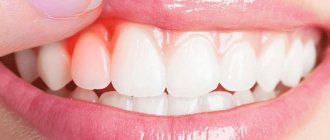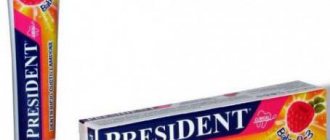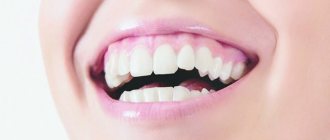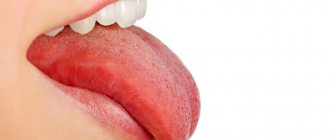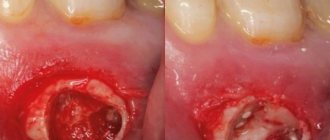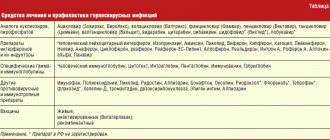Paracetamol
The most popular anti-inflammatory and pain reliever for children is Paracetamol:
| Release form | Tablets, suspension, syrup, rectal suppositories |
| Active substance | Paracetamol, sometimes in combination with ascorbic acid |
| Indications | Pain syndrome, neuralgia, myalgia, elevated body temperature |
| Contraindications | Hypersensitivity to the composition, anemia, renal dysfunction |
| Mode of application | Rectally or orally |
| Dosage | Orally – 10 mg/kg body weight, rectally – one suppository per day |
| Side effects | Nausea, abdominal pain, anemia, impaired renal function, liver function, agranulocytosis, thrombocytopenia, allergies |
| Price | 6 rubles for 10 tablets 500 mg |
Articles on the topic
- Safe cough expectorant for infants - review of drugs with descriptions
- 5 proven antipyretics for newborns - instructions for use and composition
- Pain-relieving ointments for children with bruises and injuries - effective remedies with description
When should you not give painkillers to children?
Safe and effective sleeping pills for children
There are situations in which you should never “feed” your child painkillers.
Otherwise, it will be difficult for the doctor to make the correct diagnosis and provide timely assistance. Among these “contraindications for use”:
Stomach ache. You already know that the pharmacy analgesics available to you are not capable of relieving such pain, and this is actually very good. Because my stomach doesn't just hurt. There is a more than good reason for this. Appendicitis, inflammation or injuries to internal organs are all reasons to call an ambulance rather than take analgesics.
If a child has a stomach ache, this is not yet a reason to take analgesics. First, call the doctor.
If a child has a headache and is delirious, you should not immediately take painkillers, since in this case encephalitis cannot be ruled out
Pain of unknown etiology. This is when the baby himself cannot clearly explain his condition. He claims that “it hurts here” and at the same time points to the entire chest or the entire abdominal area. Don’t take on the difficult task of recognizing the cause of your baby’s pain. Do not give analgesics, so as not to “drown out” the symptoms that are important for the diagnostician. Just do it right away as in the two cases described above. Call an ambulance.
If you have already been taking analgesics for 5 days. This is a critical time. Taking more painkillers is bad for your health.
You cannot give your child painkillers for more than 5 days.
- All children without exception are prohibited from taking Analgin. This previously very popular drug has been recognized as extremely undesirable for children under 15 years of age since 1991. It can provoke the so-called “Ray's syndrome” - a severe condition of liver failure with simultaneous brain damage, often ending in death.
- When taking painkillers, you do not need to follow the rule “One is good, two is better!” and combine several remedies or exceed the dosage. This could end sadly.
- If your child is already taking any medications or vitamins, be sure to consult your doctor. It is almost impossible to independently take into account the degree of interaction of painkillers with the medications that the baby already drinks or takes in injections. But the effect of a “mismatch” of ingredients can be quite unexpected and unpleasant.
- Keep track of the expiration dates of the medications in your medicine cabinet. Do not give your child expired pain medications.
Dr. Komarovsky, whose advice modern mothers listen to so much, argues that it is irresponsible to anesthetize and reduce the temperature every time a child has pain or fever. After all, temperature is the work of the immune system, and pain is a protective reaction. By supplying the child’s body with “heavy artillery” of painkillers, we adults, to some extent, prevent his immunity from fighting the disease.
But sometimes these drugs are still necessary. For example, in children, to avoid seizures. So, the best advice for childhood pain is this: call a doctor! Only he will be able to determine why the pain occurred, what caused it and how best to treat it. After all, pain is only an external manifestation of an internal problem. And analgesics do not cure, but “knock down” external symptoms.
Dr. Komarovsky does not recommend giving your child antipyretic and painkillers at the first symptoms
In the next video, Dr. Komarovsky will tell you how to provide first aid to a child for pain of various types.
Ibuprofen
The children's pain reliever Ibuprofen is prescribed by pediatricians for infants:
| Release form | Tablets, gel, analgesic suspension |
| Active substance | Ibuprofen |
| Indications | Arthritis, neuralgia, fever, migraine, tonsillitis, toothache, bronchitis, rhinitis, pneumonia, sinusitis |
| Contraindications | Intolerance to the components of the composition, scotoma, amblyopia, edema, hypertension, hemophilia |
| Mode of application | Orally, rectally or externally |
| Dosage | 20–40 mg/kg body per day, external course lasts 2–3 weeks |
| Side effects: | Nausea, vomiting, abdominal pain, heartburn, anorexia, diarrhea, flatulence, tachycardia, depression, drowsiness, allergic reactions |
| Price | 60 rubles for 20 tablets 400 mg |
General information about analgesic drugs
Effective drugs for skin fungus
Painkillers (another pharmacological name for NSAIDs or NSAIDs) block the cyclooxygenase (COX) enzyme system responsible for the production of inflammatory inducers and the occurrence of pain.
Indications for taking analgesics are:
- Pain syndrome due to fractures of ribs, limbs, femoral neck, spine and other injuries;
- Pain (menstrual, dental, headache, post-operative, etc.);
- Inflammation of the musculoskeletal system.
General restrictions on taking painkillers:
- Individual intolerance to components, including hypersensitivity to NSAIDs;
- Disturbances in the hematopoietic system (hemophilia and other conditions accompanied by decreased thrombus formation; bleeding, etc.);
- Exacerbation of pathological processes in the intestines and/or stomach (colitis, ulcers, Crohn's disease, etc.).
The list of contraindications may differ for different medications.
Caution must be taken when:
- Cardiovascular disorders (heart failure, hypertension, stroke, coronary artery disease, etc.);
- Endocrine diseases;
- Pathologies of the kidneys and/or liver.
Side effects possible when taking analgesics:
- Deterioration of blood clotting, tendency to bleeding;
- Development of gastropathy.
Women should be aware that long-term use of NSAIDs suppresses ovulation.
Nurofen
Children's pain medications should safely relieve pain without causing harm to health. Nurofen is a popular disinfectant for infants:
| Release form | Suspension, candles |
| Active substance | Ibuprofen |
| Indications | Headache, toothache, neuralgia, fever |
| Contraindications | Gastric ulcer, heart failure, intolerance to the components of the composition or acetylsalicylic acid, hemophilia, hemorrhagic diathesis, low birth weight child |
| Mode of application | Orally or rectally for no longer than 3 days when used as an antipyretic and 5 days when used as an analgesic |
| Dosage | Orally – 2.5 ml of suspension 3-4 times a day, rectally – 1 suppository per day at night; for fever – 5–10 mg/kg body weight per day. For fever after immunization - 50 mg once. Shake the suspension thoroughly before use. |
| Side effects | Dizziness, anemia, renal dysfunction, diarrhea, leukopenia, allergic reactions |
| Price | 220 rubles for 200 ml of suspension |
Application anesthesia is also used in other cases:
- if the patient exhibits a pronounced gag reflex during tooth preparation;
- when it is necessary to obtain intraoral X-rays or impressions of the jaw;
- to relieve pain in the marginal periodontium;
- in case of difficult eruption of wisdom teeth - for the period of excision of the hood above them;
- during a biopsy;
- during dissection of the frenulum;
- when performing curettage of periodontal pockets;
- in the treatment of minor destruction of tooth enamel, etc.
Tantum Verde
Tantum Verde is considered a safe pain reliever for infants:
| Release form | Spray, solution, lozenges |
| Active substance | Benzydamine |
| Indications | Pharyngitis, gingivitis, stomatitis, tonsillitis, inflammation of the oral mucosa, phlebitis |
| Contraindications | Hypersensitivity to the components of the product, lack of muscle mass, gastrointestinal disorders |
| Mode of application | Inside, locally, externally |
| Dosage | Spray – 1–4 doses per day, solution – 1.5 ml for irrigation of the oral mucosa, tablets – 1 pc., 3–4 times a day |
| Side effects | Burning sensation, dry mouth, numbness, laryngospasm, skin allergies |
| Price | 270 rubles for 20 tablets 3 mg |
Spray irrigation method
According to the results of clinical studies, the most pronounced analgesic effect in the treatment of caries of temporary teeth is provided by sprays and aerosols, for example Lignospam, Lidokain 10%, Legekain, etc. Anesthesia occurs after 30-40 seconds and lasts for 15 minutes. Due to their unpleasant taste, gels and aerosols are contraindicated in children under four years of age, as they increase salivation and can enter the respiratory tract and cause respiratory arrest.
Older children also complain of local symptoms after irrigation - numbness of the laryngeal tissue, sensation of a lump in the throat, hoarseness, which sometimes lead to breathing problems. Therefore, before using sprays and aerosols, the dentist must tell the patient how to behave correctly and make sure that he has accepted the information. This type of anesthesia can only be done while exhaling, but it is safer to apply the product to a cotton swab and apply it to the area, similar to liquid solutions.
Otipax
To treat ear problems in infants, Otipax drops are used:
| Release form | Ear drops |
| Active substance | Lidocaine, phenazone |
| Indications | Acute, inflammatory moderate, barotraumatic otitis, complications after influenza |
| Contraindications | Perforation of the eardrum, hypersensitivity to the components of the composition |
| Mode of application | Instillation of a pre-warmed (between the palms) product into the external auditory canal for no longer than 10 days |
| Dosage | 3-4 drops 2-3 times a day |
| Side effects | Allergy, irritation, skin hyperemia |
| Price | 210 rubles for 15 ml |
How is topical anesthesia performed?
The area of the mucous membrane is dried with a cotton swab. Then a small amount of anesthetic is carefully applied to it with a cotton swab or swab. The drug instantly penetrates 2-3 mm deep - the effect occurs within 30-40 seconds in the case of solutions and after 2 minutes if ointments or gel are used. The anesthesia lasts for 10-15 minutes.
As anesthetic agents in pediatric dentistry, those that meet certain requirements are used:
- soluble in water and isotonic solution;
- demonstrate high resistance to sterilization and stability in solutions;
- have a bactericidal effect and a pleasant taste, which is important for children;
- penetrate well through the epithelial layer;
- provide rapid pain relief;
- do not cause irritation;
- exhibit minimal toxicity upon absorption;
- give a minimum of adverse reactions.
Characteristic features of dosage forms
External painkillers for back and joint pain are represented by ointments, gels and creams. But sometimes doctors recommend using sprays that are easy to apply. Pain is one of the leading clinical symptoms that have a negative impact on the quality of life of patients, reducing their functional activity and limiting the ability to move. Especially often, discomfort of varying degrees of severity and localization occurs in people with the following diagnosed diseases:
- degenerative-destructive processes: spondylosis, osteoarthritis, spondyloarthrosis, osteochondrosis of various parts of the spinal column - cervical, thoracic, lumbar;
- inflammatory joint pathologies: arthritis, polyarthritis, rheumatoid arthritis;
- lesions of periarticular tissues: tenosivitis, dactylitis;
- inflammatory muscle diseases (myositis).
Painkillers for joint pain often require long-term course use in rheumatology, which causes the accumulation of active substances and the manifestation of side effects. Frequent replacement of drugs with analogues containing other active ingredients helps prevent events from developing in such a negative scenario.
If you experience severe back pain, you should contact a medical facility for a thorough examination. This symptom does not always indicate developing pathologies of the musculoskeletal system. Lower back pain also occurs with pyelonephritis, urolithiasis, acute or chronic renal failure.
To reduce the severity of pain and relieve the inflammatory process, rheumatologists, neurologists, and traumatologists can prescribe external agents presented in the table:
| Group of pharmacological drugs | Name of medicines (ointments, creams, gels, balms, rubs) |
| Combined | Dolobene, Indovazin |
| Chondroprotectors | Teraflex, Chondroxide |
| Nonsteroidal anti-inflammatory drugs | Voltaren, Fastum gel, Diclofenac gel and ointment, Ketoprofen, Diclak, Bystrum |
| Warming up | Finalgon, Apizartron, Nicoflex, Capsicam, Efkamon, Viprosal |
Daily and single dosages, as well as the duration of use of any anti-inflammatory and analgesic ointment for joints depend on the stage of the degenerative process and general health. What is important is a history of pathologies of the gastrointestinal tract and urinary system. For example, warming agents are rarely used in the treatment of patients diagnosed with cardiovascular disease. And in case of renal failure, the application of a topical non-steroidal anti-inflammatory drug will cause the accumulation of active substances in the tissues and the development of complications.
https://youtube.com/watch?v=o5VXqkvGoGM
If the use of local drugs as monotherapy does not bring results, to increase the effectiveness of ointments, gels and creams for joint pain, doctors simultaneously prescribe drugs for etiotropic and pathogenetic treatment, which most often use NSAIDs in tablets and injection solutions, glucocorticosteroids, antihistamines, analgesics in injections and tablets, antipyretics, antibiotics and antispasmodics.
In what cases is a child given pain medication?
Pain syndrome never appears on its own; it signals the presence of a disorder, a malfunction in the child’s body. The baby still cannot tell his parents what exactly is hurting him, and they can only guess - is it teething or colic in the stomach?
Most often, pain occurs in children for the following reasons:
- injuries,
- eruption of baby teeth,
- disorders of the digestive system,
- acute respiratory diseases and their complications,
- in newborns - colic, increased gas formation (we recommend reading: what to do if a newborn has gas?).
The choice of painkillers for children at the pharmacy is huge; the pharmacist will help you choose the drug in the right dosage and form. However, whether your child needs to take painkillers should only be decided by a doctor. Uncontrolled use will bring relief only for a short time, but can cost the child’s life, so first of all you need to determine the source of pain.
Perhaps the most understandable and easiest condition in which you can safely take painkillers is ARVI with accompanying headaches and muscle pain. The medicine will also reduce high fever and remove tissue swelling.
You can take a painkiller when teething, but only at night or if the pain is very severe, you cannot take it constantly. It will relieve discomfort and help the baby sleep peacefully.
Emergency situations in the form of fractures or bruises require prompt medical intervention. The child can be given a painkiller until the ambulance arrives or is examined by a traumatologist.
